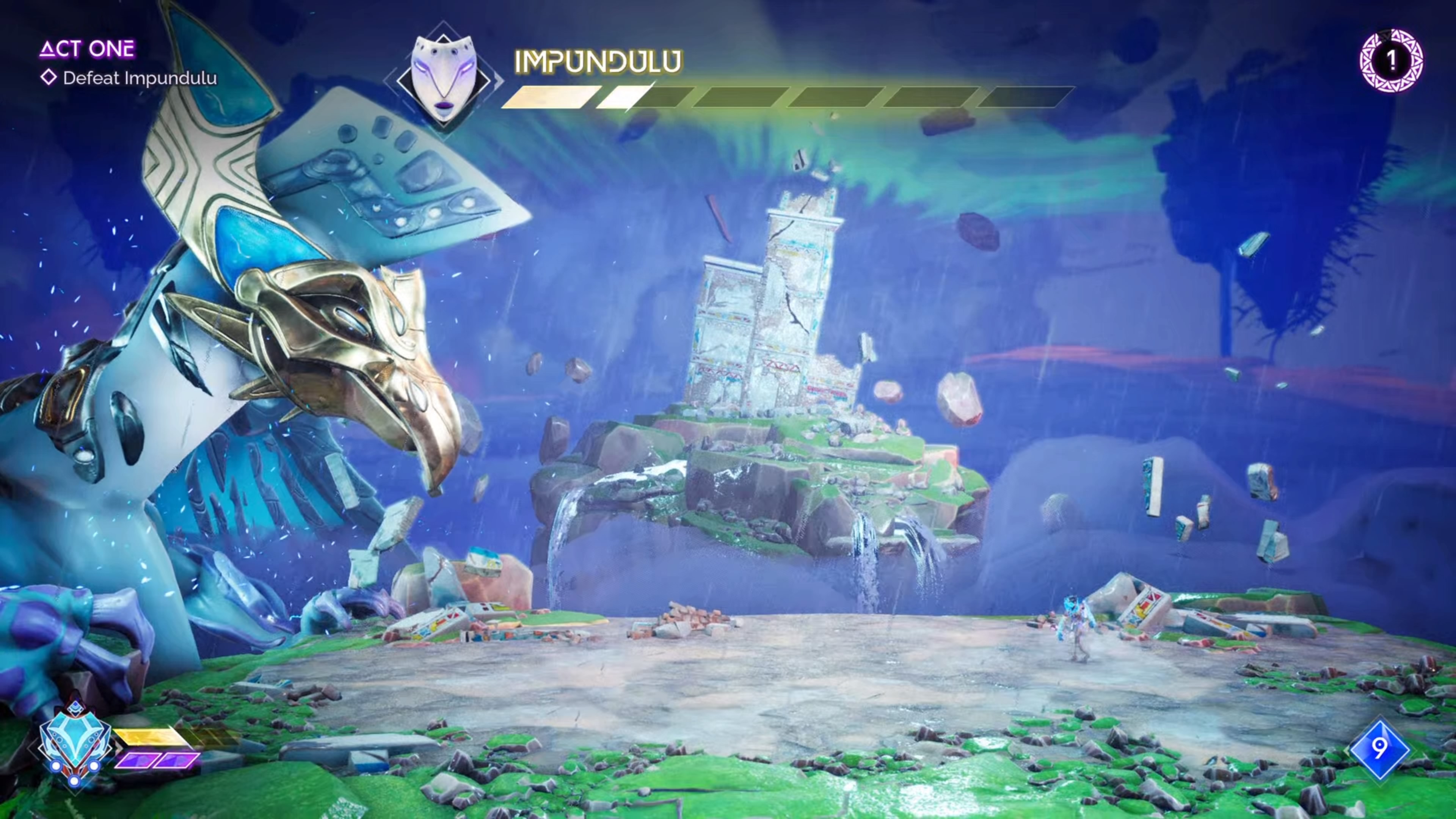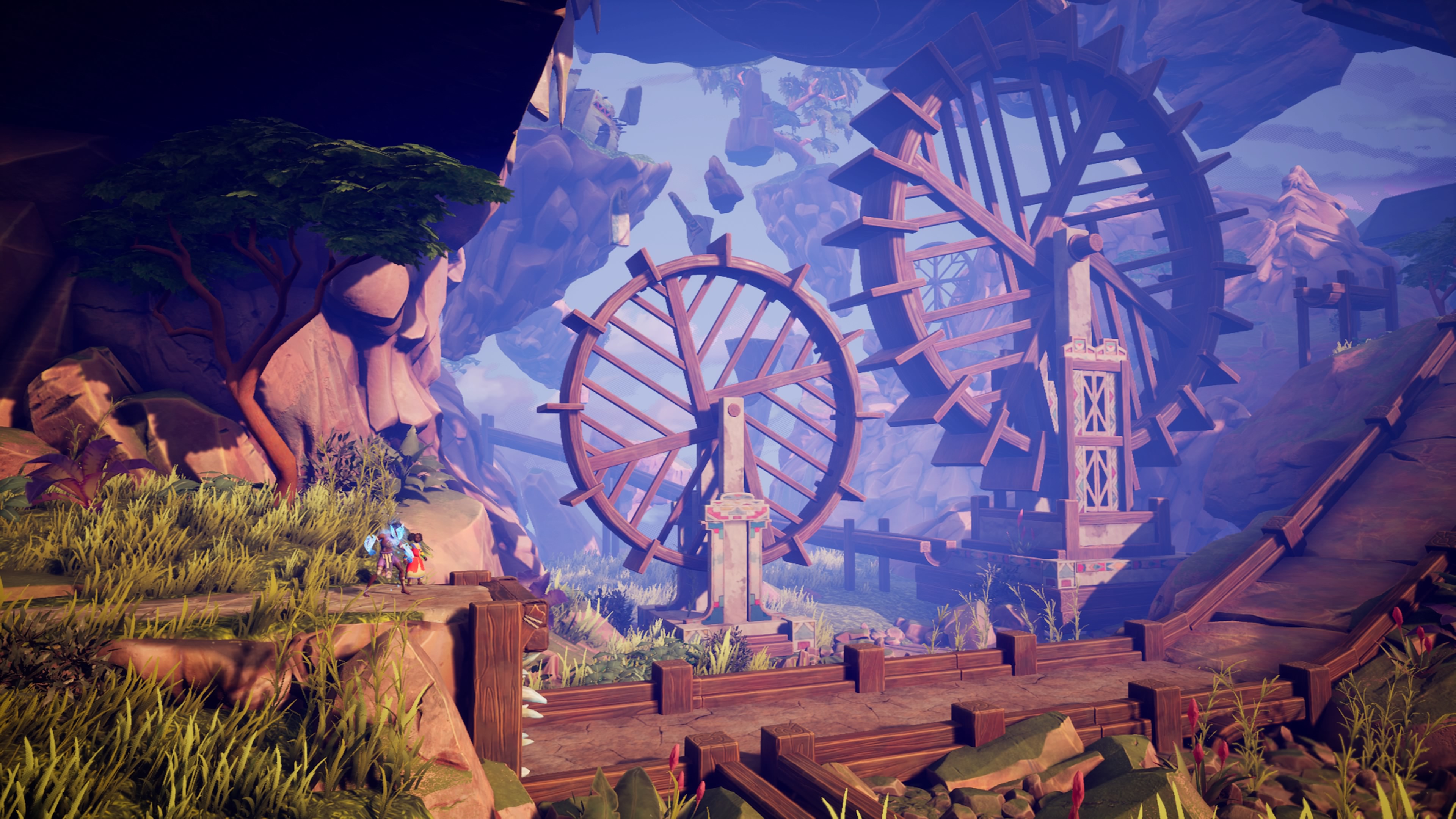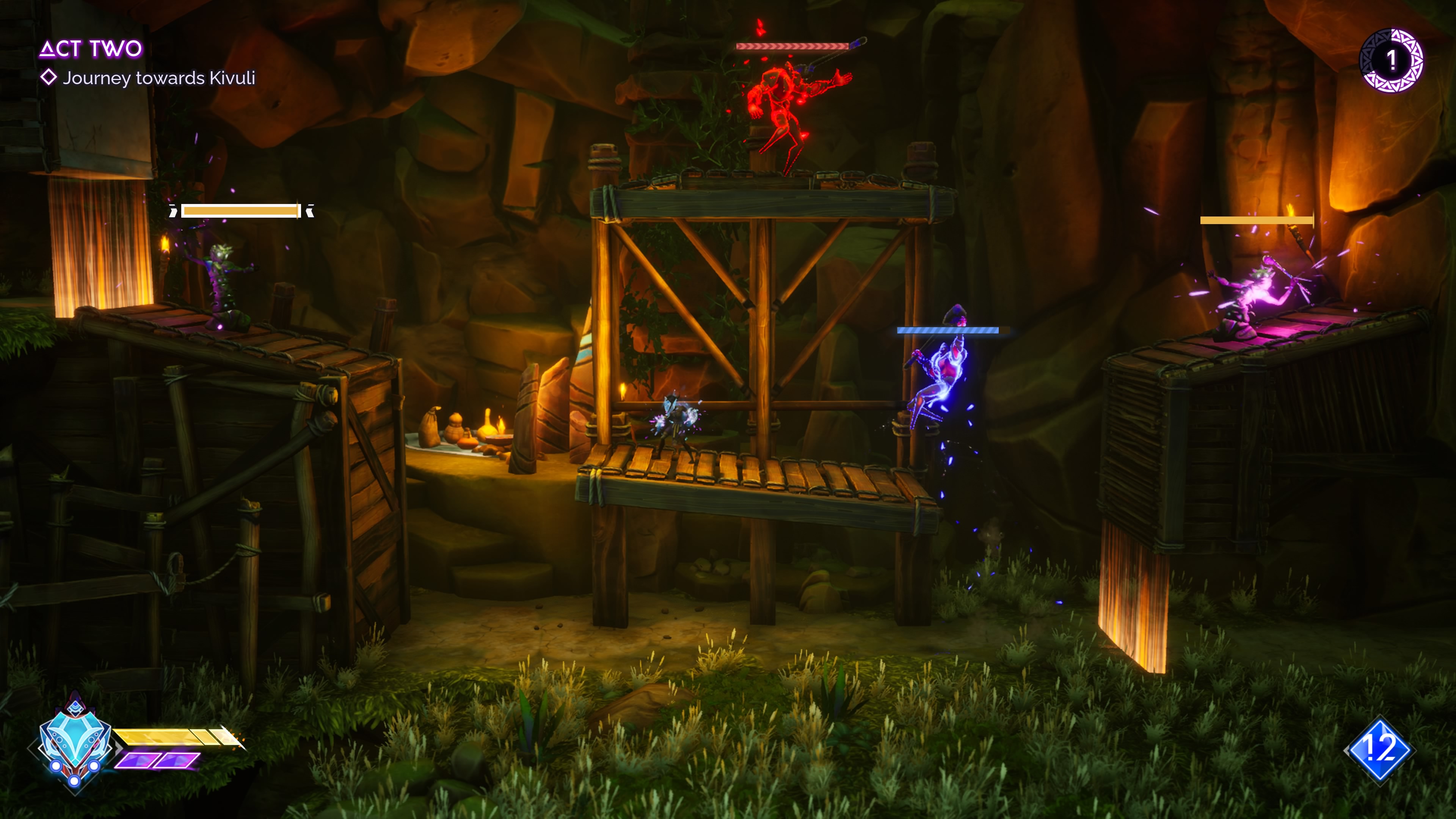
What is it? A metroidvania based on African folklore.
Expect to pay £18/$20
Release date April 23, 2024
Developer Surgent Studios
Publisher EA
Reviewed on RTX 2070, i7-10750H, 16GB RAM
Steam Deck Verified
Link Official site
Mythologies often paint the Sun and the Moon as complementary opposites, two sides of an enormous shiny coin, as it were. And rarely has this relationship been clearer than in Tales of Kenzera: Zau, inspired by the Bantu folklores of southern and central Africa, where solar heat and lunar cool together help you survive its metroidvania challenges. In short, it's the stuff legends are made of, even if the design of said challenges doesn't itself quite reach for the stars.
Most of the freshness in Tales of Kenzera stems from its setting, given that African mythologies (ancient Egypt excepted) remain a largely untapped resource in games. Playing as young shaman Zau, there's a real sense here that you've been dropped not only into an adventure but a legend passed between distant ancestors, drawing on regional lore of magical artefacts, spirits and gods.

Zau's mission is as much about his personal growth as his aims, as he quests to reclaim his deceased father from the land of the dead. In order to get permission from Kalunga, God of death, he first has to send three great spirits the other way, as they're running amok about the country, refusing to acknowledge their time is up. In the process, Zau might just learn a thing or two about accepting the cycle of life.
As for the Sun and the Moon, their power is infused into a pair of shaman's masks that previously belonged to papa Zau, and our hero can quick-change between them to banish the plethora of smaller hostile spirits loitering around the otherwise deserted tribal lands. Don the moon mask and you can run and gun, slinging magic bullets as if wielding an automatic pistol. The sun mask is suited to closer encounters, letting out a flurry of melee blows or a launching strike that leaves enemies flailing in the air.
The fact that your moon shot needs frequent reloading and some spirits come equipped with shields that can only be broken with a specific element means you need to get used to juggling both attack styles. In later levels especially, combat in Tales of Kenzera becomes a kind of frantic puzzle where you try to stay mobile, make use of harmful scenery for quick kills and select the right rock to blunt your opponents' scissors. That your quick heal power draws on the same rechargeable resource as your mega blast super attacks also leads to some tricky balancing.

It can get a little untidy at times, to the point you might lose track of Zau's position amongst a mob, or find yourself sucker-punched by a projectile homing in from offscreen. But even then, you always feel there's a way to avoid such mishaps—getting rid of the missile-lobber first, for example, or steering clear of heavy traffic. A bigger disappointment is that the game's three major regions don't have their own bespoke cast of enemies, with only around eight kinds in all, barring bosses. There is variety in their combinations, and the arrangement of platforms and hazards in battles, but a sense of repetition slowly creeps in.
Switch hitter
Of course, since his adventure is a metroidvania, Zau also gathers new powers and techniques on his travels. He's actually pretty well-stocked from the start, with a double jump and a wall jump among his default skillset, but he soon adds extra combat moves that you pick from a skill tree, and a series of more momentous abilities bestowed by ancient relics. Each mythical item provides a new means of navigating the environment, although some are handy in a fight too. The first allows you to freeze waterfalls, streams and enemies temporarily, while the next, a flaming spear, is essential for striking distant timer switches and doubles as a range attack when you're wearing the sun mask.
These powers don't, however, fold into your acrobatic leaping routines so much as function in specific circumstances, like when a strategically placed waterfall gives you the leg up you need if you freeze it, or a hook point for your slingshot grapple move bisects an otherwise uncrossable gap. Yet once you get a few of these techniques under your belt, Tales of Kenzera gets busy with some pretty intricate platforming sequences, asking you to flick through your repertoire with speed and grace. In some of the game's optional challenge rooms, you may wish that control of Zau was a touch tighter, but for the most part he's pleasingly nimble and chaining moves is intuitive.

A little more curiously for a metroidvania, what these new powers don't do much is open up fresh paths on roads already travelled for further exploration. So, when you complete your first trip out to meet and beat a great spirit then return to the centre of the map, there's not a great deal that's newly accessible with the gear you picked up since you were last there, so off to the next region you go. Many of the game's non-critical temptations, from lore-drop echoes to max health boosts and those challenges, then, merely dwell in short offshoots from the main track that you can choose to tackle as you find them.
Tales of Kenzera isn't the first metroidvania to go light on exploration, of course, and others have proven there's nothing wrong with that when your level design is up to scratch. And the level design here is up to scratch, largely because it doesn't divert much from patterns set by its predecessors. Ori and the Blind Forest in particular is an evidently close inspiration—down to a couple of post-boss escape sequences—while colour-coded shields carry over from Guacamelee, among others.
Tales of Kenzera works, in other words, because its methods are tried and tested. But, well, it does work, and it's cloaked in such fascinating, often beautiful fiction that it's easy to get swept along to its conclusion even if you've played these notes before. While it may be somewhat eclipsed by other gaming legends, then, it would be harsh to deny Zau's tale its day in the sun.







